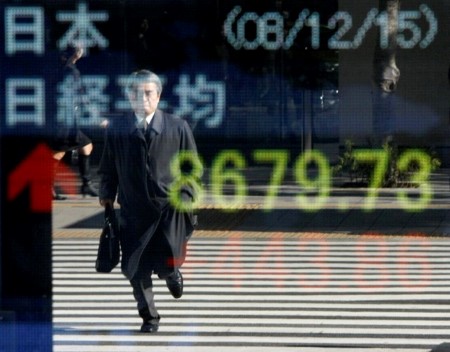




Policy Rate Updates: Double cut finale
 DOWNLOAD
DOWNLOAD

Monthly Economic Update: One for the road
 DOWNLOAD
DOWNLOAD

Inflation Update: Still low, still slow
 DOWNLOAD
DOWNLOAD


Eyes on Japan CPI, US soft landing hopes grow

Dec 22 – Investors seem more confident than ever that the US economy is gliding towards the hallowed ‘soft landing’, which bodes well for risk assets in Asia as the final full trading week of the year draws to a close on Friday.
Consumer price inflation figures from Japan top the regional economic calendar, and investors also have inflation data from Malaysia, bank lending from Australia, and the latest unemployment report from Taiwan to get their teeth into.
Although the MSCI World index is poised for its eighth consecutive weekly rise, which would be the longest winning streak in six years, emerging market and Asian stocks have not performed as strongly.
The MSCI Asia ex-Japan index is on track for a third weekly loss in four. But it looks like a very slender decline which will flip to a second straight weekly gain if the index rises 0.2% or more on Friday.
This is likely, after the rebound on Wall Street and in global stocks on Thursday. The move was partly a natural bounce back from the surprise slump in the last hour of trading the previous day, and partly thanks to figures that showed US inflation is back down to the Fed’s target.
The final reading of third quarter US growth and inflation showed that growth was revised down to a 4.9% annualized rate from 5.2%, but annual rate of core PCE inflation was revised down to 2.0% from 2.3%.
Traders quickly moved to price in a more dovish Fed outlook – 155 basis points of easing next year is now expected, the first cut will be in March, with a 15% probability that the easing cycle could even start in January.
Music to the ears of the ‘soft landing’ crew, a band of believers that appears to be gaining in numbers by the day.
On Friday the inflation focus switches to Japan from the US.
Japan’s core annual consumer inflation rate is expected to slow in November to 2.5% from 2.9%. That would be the lowest since July last year and mark one of the steepest declines in years.
Headline inflation is stickier – in October it was running at an annual rate of 3.3% – and has not been below 3% since July last year. After decades of fighting deflation, the Bank of Japan wants to see sustained inflation, as it gears up to exit ultra-loose policy and turn interest rates positive again.
“The chance of trend inflation accelerating towards our price target is gradually heightening,” Ueda said in a press conference on Wednesday after leaving policy unchanged. “But we still need to scrutinize whether a positive wage-inflation cycle will fall in place.”
Here are key developments that could provide more direction to markets on Friday:
– Japan CPI inflation (November)
– Australia credit and lending (November)
– Malaysia CPI inflation (November)
(By Jamie McGeever)
This article originally appeared on reuters.com





 By Reuters
By Reuters